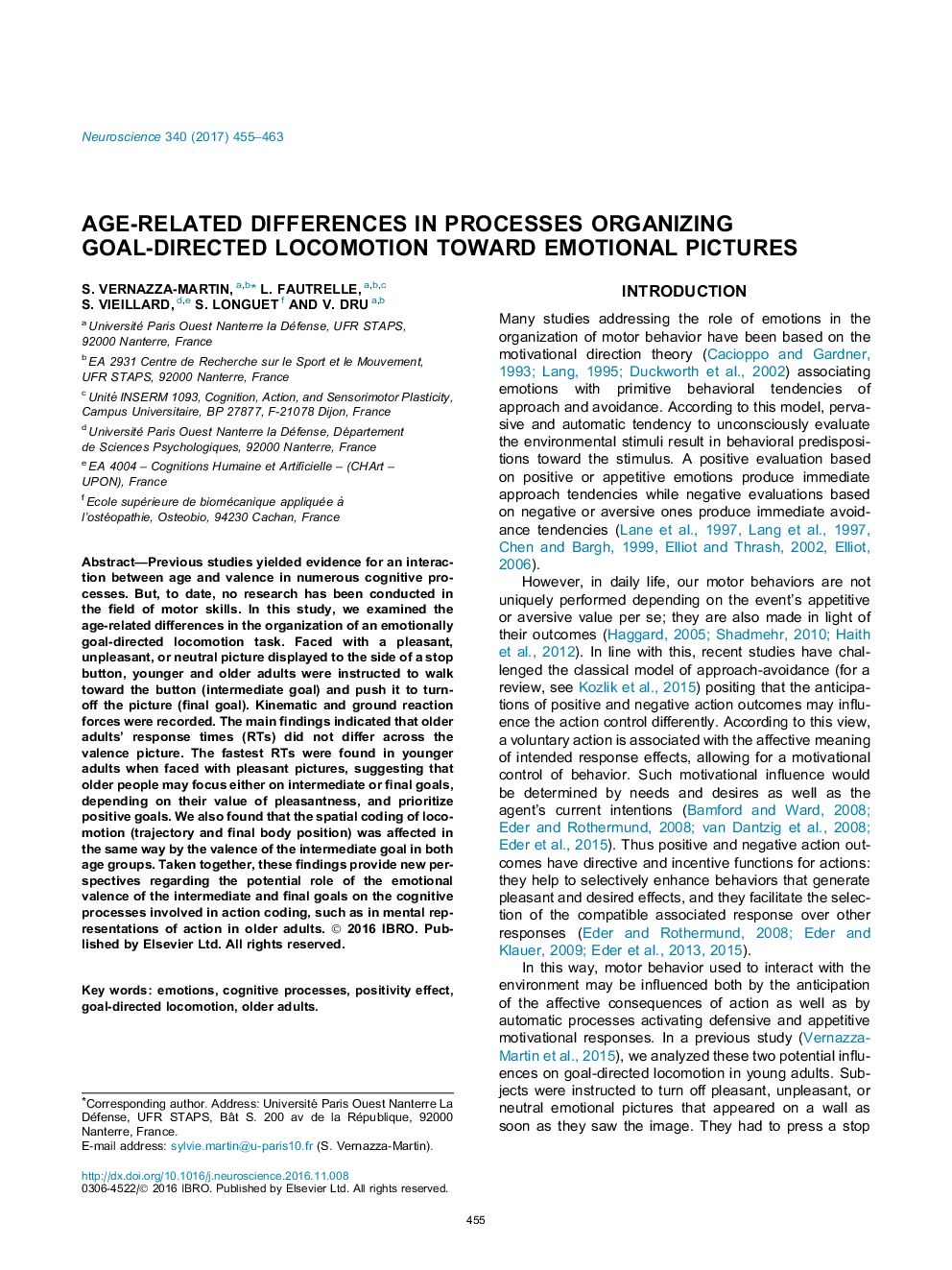| Article ID | Journal | Published Year | Pages | File Type |
|---|---|---|---|---|
| 5737527 | Neuroscience | 2017 | 9 Pages |
â¢Age-related differences are analyzed for the organization of an emotionally task.â¢Subjects were instructed to walk and push a button to turn-off an emotional picture.â¢Walking is an intermediate goal and push the button is a final goal.â¢Older people react depending on the goal that is associated with a positive emotion.â¢The spatial coding of locomotion depends on the valence of the intermediate goal.
Previous studies yielded evidence for an interaction between age and valence in numerous cognitive processes. But, to date, no research has been conducted in the field of motor skills. In this study, we examined the age-related differences in the organization of an emotionally goal-directed locomotion task. Faced with a pleasant, unpleasant, or neutral picture displayed to the side of a stop button, younger and older adults were instructed to walk toward the button (intermediate goal) and push it to turn-off the picture (final goal). Kinematic and ground reaction forces were recorded. The main findings indicated that older adults' response times (RTs) did not differ across the valence picture. The fastest RTs were found in younger adults when faced with pleasant pictures, suggesting that older people may focus either on intermediate or final goals, depending on their value of pleasantness, and prioritize positive goals. We also found that the spatial coding of locomotion (trajectory and final body position) was affected in the same way by the valence of the intermediate goal in both age groups. Taken together, these findings provide new perspectives regarding the potential role of the emotional valence of the intermediate and final goals on the cognitive processes involved in action coding, such as in mental representations of action in older adults.
